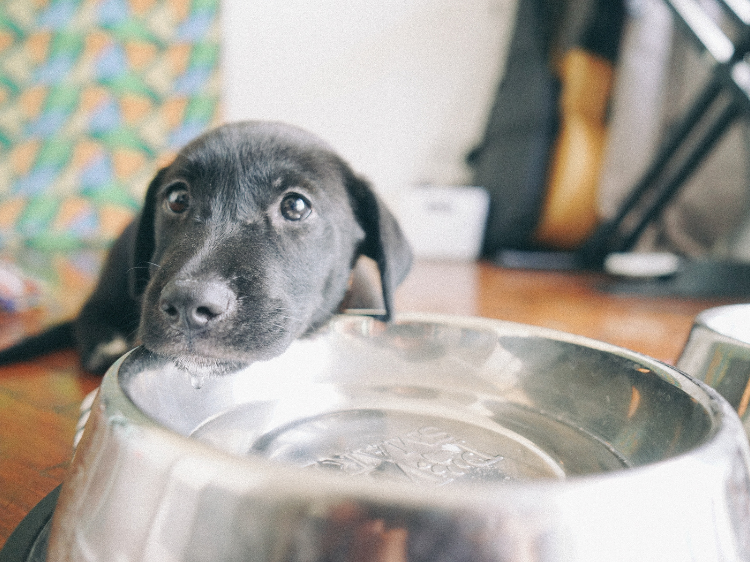The Importance of Regularly Cleaning Your Dog’s Food and Water Bowls

Keeping your dog healthy goes beyond providing nutritious meals. Many pet owners overlook the significance of clean feeding bowls. Regularly cleaning your dog’s food and water bowls is essential for their overall well-being. If you’re purchasing from online dog food suppliers, ensure you pair quality food with hygienic feeding practices.
Why Clean Bowls Matter for Your Dog’s Health
Preventing Bacteria Build-Up
Dogs’ bowls are breeding grounds for harmful bacteria. Leftover food and saliva encourage bacteria like E. coli and Salmonella to grow. These microorganisms can cause severe health problems for your furry friend. Washing bowls daily removes harmful contaminants and keeps your dog safe.
Avoiding Biofilm Formation
Biofilm is a slimy layer that forms on moist surfaces. If you don’t clean your dog’s bowls regularly, biofilm can develop. This substance harbors bacteria and viruses, posing a significant health risk. Proper cleaning techniques can eliminate biofilm and ensure your dog’s feeding environment stays clean.
“Dogs are not our whole life, but they make our lives whole.” – Roger Caras
Reducing the Risk of Illness
Unclean bowls can lead to infections, diarrhea, and vomiting in dogs. Regular cleaning minimizes the chances of your pet ingesting harmful pathogens. Healthy feeding habits can save you expensive vet bills in the long run.
Best Practices for Cleaning Dog Bowls
Daily Cleaning Routine
Wash your dog’s bowls with hot water and mild dish soap after each meal. Scrubbing thoroughly removes food residue and bacteria. Rinse well to prevent soap traces from mixing with food or water.
Weekly Deep Cleaning
Deep clean the bowls at least once a week using a non-toxic disinfectant. Soak the bowls in a vinegar-water solution for 10 minutes. Rinse thoroughly and let them air dry before use.
Use Proper Cleaning Tools
Use a dedicated sponge or brush for cleaning your dog’s bowls. Avoid using tools meant for your dishes to prevent cross-contamination. Replace the cleaning tools frequently to maintain hygiene.
Choosing the Right Bowls for Your Dog
Material Matters
Opt for stainless steel or ceramic bowls, as they are less likely to harbor bacteria. Plastic bowls can develop scratches that trap germs, making cleaning harder. High-quality materials ensure durability and easy maintenance.
Size and Design
Choose bowls that match your dog’s size and eating habits. Wide, shallow bowls work well for flat-faced breeds. Elevated bowls can benefit larger dogs, reducing strain on their necks.
Non-Slip Features
Bowls with non-slip bases prevent spills and make cleaning easier. A stable feeding setup reduces mess and keeps your floor clean.
Recognizing Signs of Dirty Bowls
Visual Clues
If you notice slime, discoloration, or leftover food particles, it’s time for a thorough cleaning. Regular inspection helps maintain cleanliness.
Odor Detection
Unpleasant odors coming from the bowls indicate bacterial growth. Clean the bowls immediately to protect your dog’s health.
Behavioral Changes in Dogs
A sudden reluctance to eat or drink from their bowls might signal unclean feeding dishes. Address the issue promptly to ensure your dog’s comfort.
Benefits of Regular Cleaning for Your Dog
Enhanced Taste Experience
Food served in clean bowls retains its natural flavor and aroma. Dogs enjoy their meals more when bowls are spotless.
Improved Hydration
Fresh, clean water encourages your dog to stay hydrated. Dirty water bowls can deter drinking, leading to dehydration.
Longer Lifespan
Hygienic feeding practices contribute to your dog’s overall health, potentially increasing their lifespan. A clean environment ensures fewer illnesses and a happier pet.
How Regular Cleaning Affects Your Household
Reducing Household Germs
Clean dog bowls limit bacteria spread in your home. Germs from unclean bowls can transfer to floors, counters, and hands, posing risks to your family’s health.
Maintaining a Fresh Smell
Regular cleaning prevents foul odors from lingering in your kitchen or feeding area. A fresh-smelling home benefits everyone.
Creating a Positive Feeding Routine
A clean feeding setup enhances your dog’s mealtime experience. Positive associations with food and water encourage healthy eating habits.
Common Mistakes to Avoid
Using Harsh Chemicals
Avoid bleach or strong detergents, as their residue can harm your dog. Stick to pet-safe cleaning solutions.
Ignoring Water Bowls
Many owners focus solely on food bowls. Water bowls require equal attention to prevent mold and bacteria growth.
Skipping Regular Cleaning
Even if the bowls look clean, bacteria can still thrive. Clean the bowls daily to maintain hygiene.
Cleaning Frequency Based on Feeding Habits
Wet Food Feeders
Bowls used for wet food require immediate cleaning after every meal. Wet food leaves more residue, promoting bacterial growth.
Dry Food Feeders
Bowls used for dry food can be cleaned once daily. Ensure no crumbs are left behind to attract germs.
Water Bowls
Refresh and clean water bowls at least once daily. Clean them twice a day to prevent slime build-up if you live in a hot climate.
Encouraging South African Pet Owners to Adopt Clean Feeding Habits
Awareness of Local Climate
South Africa’s warm climate accelerates bacteria growth in dog bowls, making cleaning them regularly even more critical. Educating pet owners about this can foster healthier feeding practices.
Supporting Local Businesses
Use this opportunity to connect with online dog food suppliers offering hygienic feeding accessories. Promote a holistic approach to pet care by pairing quality food with proper feeding hygiene.
A Startling Statistic
Studies show that 67% of pet bowls test positive for harmful bacteria after just one day of use. Regular cleaning is crucial for your dog’s safety.
Conclusion: Make Cleaning a Priority
Your dog’s food and water bowls directly impact their health and happiness. Regular cleaning prevents bacteria build-up, biofilm formation, and illnesses. Adopting these practices ensures your pet enjoys nutritious meals in a hygienic environment.
Invest in durable, easy-to-clean bowls and maintain a daily cleaning routine. Encourage others to prioritize pet hygiene by sharing this knowledge. A little effort goes a long way in protecting your dog and creating a healthier household.



